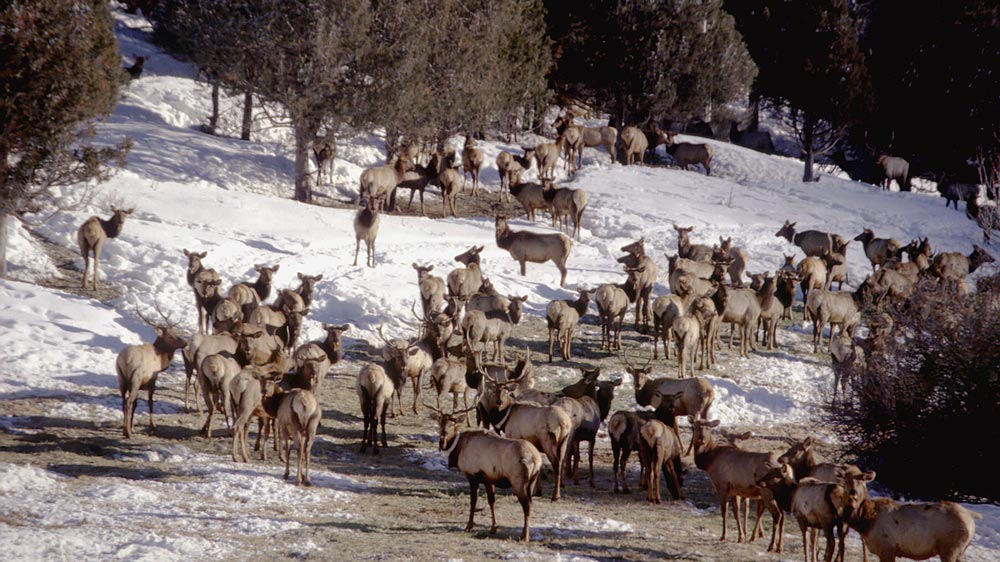Challenges with winter feeding programs

Winter Feeding is a complicated issue
In most years, wildlife survive snow depths and temperatures within their available, good quality winter habitat. Careful biological studies have shown that deer entering the winter in good condition and fat reserves can survive the winter with adequate natural feed. Starvation happens primarily to animals that enter the winter in poor body condition.
However, there are times when unusual weather conditions may make winter forage limited, unavailable or force animals into areas creating a safety hazard.
When conditions are critical Idaho Fish and Game may resort to winter feeding of wildlife, but only as a last resort. Why? Because feeding is not the simple act of kindness many people see it to be. In fact, it can create other problems for the animals people hope to help.
Concentrating wildlife increases health problems
Respiratory infections and other diseases can easily spread among animals that are concentrated around feed sites. Reproduction in some herds that are fed every winter is dramatically lower than it is in Idaho's non-fed herds. It is also common to have a higher incidence of disease, including brucellosis or chronic wasting disease, resulting in lower productivity or death in herds that are fed. Idaho's big game animals are healthy, and game managers want to keep them that way.
Competition for food
Intense competition for food in limited space around feeding sites leads to a higher death rate in fawns and calves than where herds were more scattered under natural winter conditions.
Difficulty adapting to man-provided feeds
Wild animals are accustomed to wild range vegetation and they can have a hard time adapting to the feed people provide. Even though Fish and Game has a variety of feeds with varying protein and energy levels for elk and a special multi-ingredient pellet food for deer, even adapting to these formulated foods can be difficult for big game animals. The change from natural to supplemental feeding can cause scours (diarrhea). Adapting to high protein and energy feeds can result in disruptions in gastro-intestinal flora and lead to overgrowth of some bacteria, primarily Clostridium spp. and E. coli that can cause digestive problems, bloat, and potentially, death.
Damage to winter ranges
Range damage occurs in the areas around feeding sites because animals continue to eat natural plants even when they are being fed. Where supplemental feeding takes place year after year, natural winter range vegetation can be overused and may never recover.Disrupts natural migration patterns
Big game animals easily learn new patterns of feeding and soon come to count on human help. Supplemental feeding can interrupt long-established migrations to and from winter ranges, which are essential for long-term healthy self-sustaining populations.Depredation on private lands
Established feed sites can increase the depredation of crops on nearby private lands.
In 1999 Fish and Game produced a video to explore the challenges the agency and the public face with feeding wildlife in the winter.
This part of Winter Feeding: A Wildlife Dilemma explores how protecting winter range helps secure the future of big game herds.
